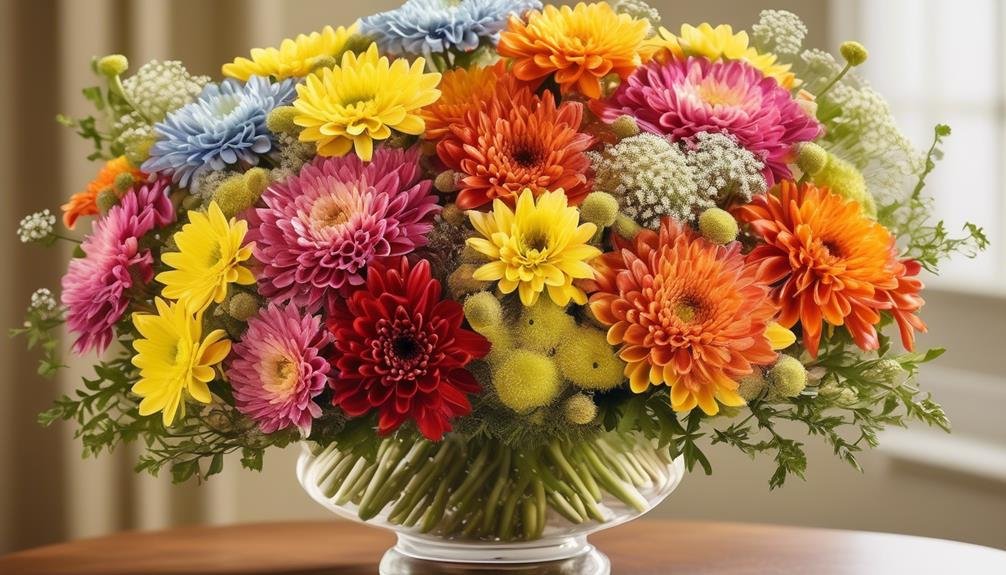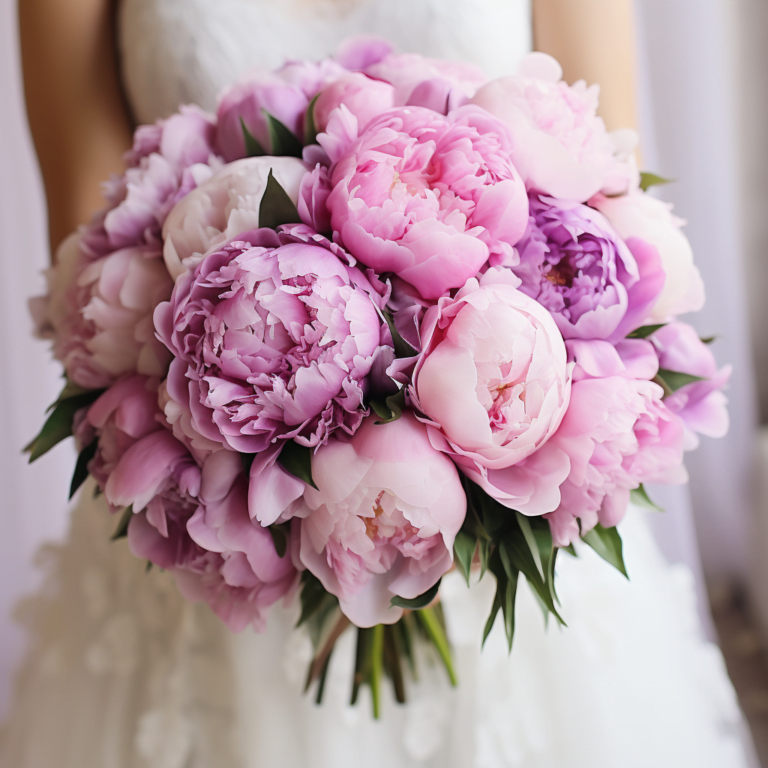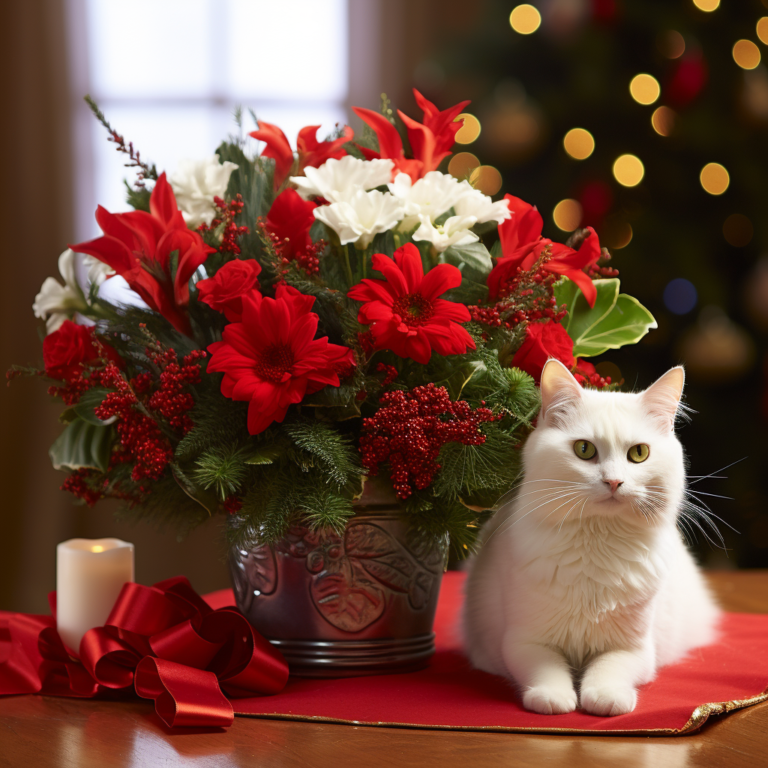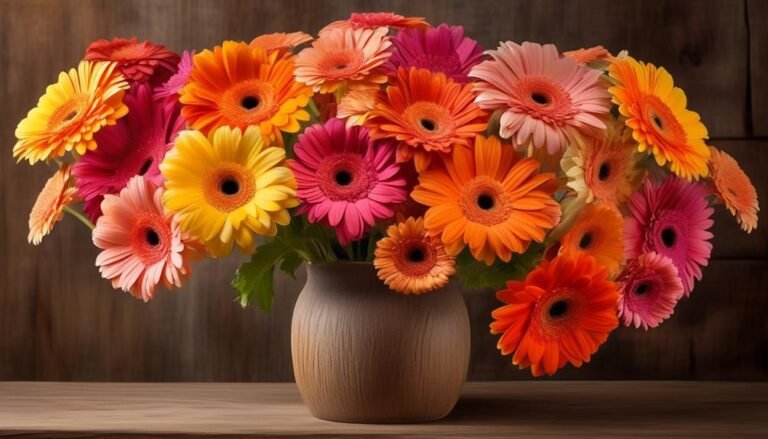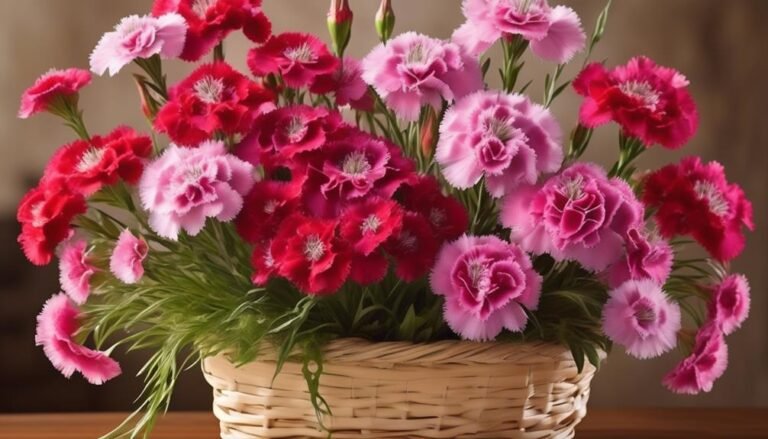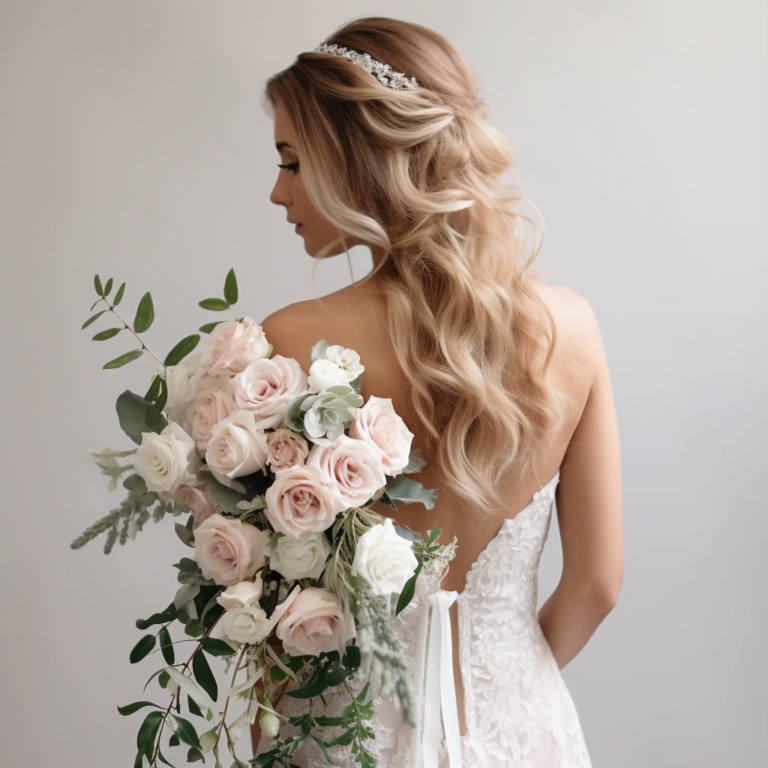Popular Types of Florist Flowers – Chrysanthemum
Table of Contents
Chrysanthemums, also known as Chrysanths, are a popular choice for florists due to their versatility and wide range of colours and petal formations. These flowers belong to the Asteraceae family and have a rich history, with diverse physical characteristics that make them unique and appealing. Understanding the chrysanthemum can open up a world of possibilities for your floral arrangements, from their scientific classification to seasonal availability and care tips.
Scientific Classification:
Chrysanthemums belong to the Asteraceae family and are further classified into various species and cultivars, each with its unique characteristics and growing requirements. They are known for their vibrant colours and intricate petal formations, making them a favourite choice for floral displays.
Seasonal Availability:
Chrysanthemums are available year-round, but they are most abundant in the fall, making them a popular choice for autumn-themed arrangements. With a wide range of colours and shapes, chrysanthemums can add depth and texture to any floral composition.
Care Tips:
To keep chrysanthemums fresh, trim the stems at an angle and place them in a clean vase with fresh water. Remove any leaves that will be submerged in the water to prevent bacterial growth. Keep the flowers in a cool location away from direct sunlight and change the water every few days to prolong their vase life.
In summary, chrysanthemums are a versatile and diverse flower that can add beauty and depth to any floral arrangement. Understanding their scientific classification, seasonal availability, and care tips can help you make the most of these stunning blooms in your floral designs.
Scientific Name
Chrysanthemum morifolium, commonly known as chrysanthemums or ‘mums,’ is a highly versatile and adaptable plant with a rich cultural history and diverse symbolism. These plants thrive in well-draining soil with a slightly acidic pH and require ample sunlight for optimal growth. They’re commonly propagated through cuttings or division, allowing for the preservation of desirable traits and characteristics. Cultivators have developed an extensive array of chrysanthemum varieties, ranging from petite, button-like blooms to extravagant, daisy-like flowers, reflecting the plant’s adaptability and the ingenuity of horticulturists.
In Japan, the chrysanthemum is a revered symbol of the Imperial Family, featured on the imperial crest and associated with longevity and rejuvenation. Conversely, in many European countries, chrysanthemums are linked to mourning and are often laid on graves. This stark contrast in symbolism highlights the cultural significance and interpretation of chrysanthemums.
Understanding the scientific name of chrysanthemums, Chrysanthemum morifolium provides insight into the plant’s cultivation and the diverse symbolism it embodies across different cultures.
Background History
Chrysanthemums, with a history dating back over 3,000 years in China, are among the most ancient florist flowers. Initially cultivated for their medicinal properties, chrysanthemums have evolved through selective breeding for a wide range of flower forms and colours, including pompons, buttons, spiders, spoons, and quills.
These flowers hold significant cultural symbolism in different societies. In Japan, they’re revered and considered the national flower, associated with the Imperial Family and celebrated during the Festival of Happiness. In Chinese culture, chrysanthemums symbolize a life of ease and retirement, while in other cultures, they represent meanings such as devotion, love, happiness, and longevity.
The historical significance and symbolism of chrysanthemums have contributed to their continued popularity as florist flowers. Their cultivation techniques have been refined to produce a wide array of stunning varieties, making them a beloved choice for floral arrangements and decorations.
Physical Description
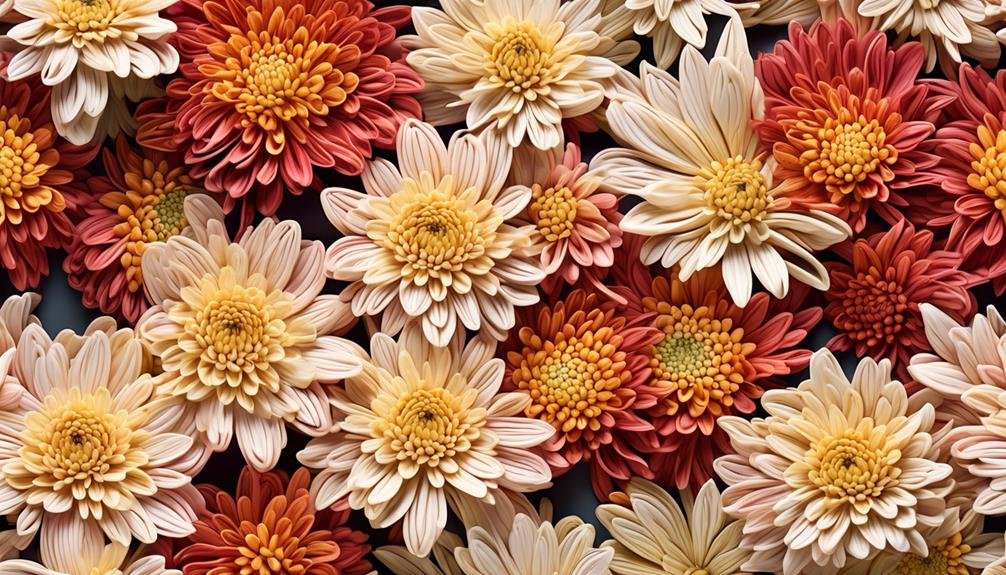
Chrysanthemums come in a wide variety of colours, including white, yellow, red, and pink, and can even be multicoloured, providing a spectrum of options for floral displays.
Their petals come in different shapes, with some having a daisy-like appearance with a central disk of florets surrounded by ray florets. The petals can be single, semi-double, or fully double, contributing to their varied and adaptable look.
Additionally, they can have thin, tubular petals that may be straight or slightly curled, giving them a quill-like appearance, and adding a touch of elegance to floral arrangements.
Chrysanthemums also range in size from small and delicate single blooms to larger, fully double-decorative blooms with intricate layers of petals.
Colours and Characteristics
Chrysanthemums, with their vibrant hues and intricate appearance, are a popular choice for floral arrangements. They come in various colours, each carrying its symbolic meaning. For example, pink chrysanthemums symbolize love and affection, red ones represent deep passion, yellow signifies happiness and friendship, white embodies purity and truth, and orange reflects warmth and enthusiasm. These flowers are deeply significant in various cultures and are often used for celebrations, sympathy, and birth month flowers.
In addition to their aesthetic appeal, chrysanthemums offer health benefits. The petals are often used to make tea, known for its medicinal properties in reducing inflammation and high blood pressure. This makes chrysanthemums not only visually pleasing but also functional with potential health-promoting qualities. Furthermore, they have a remarkably long vase life of 14 to 30 days, making them an excellent option for long-lasting displays.
Varieties Available
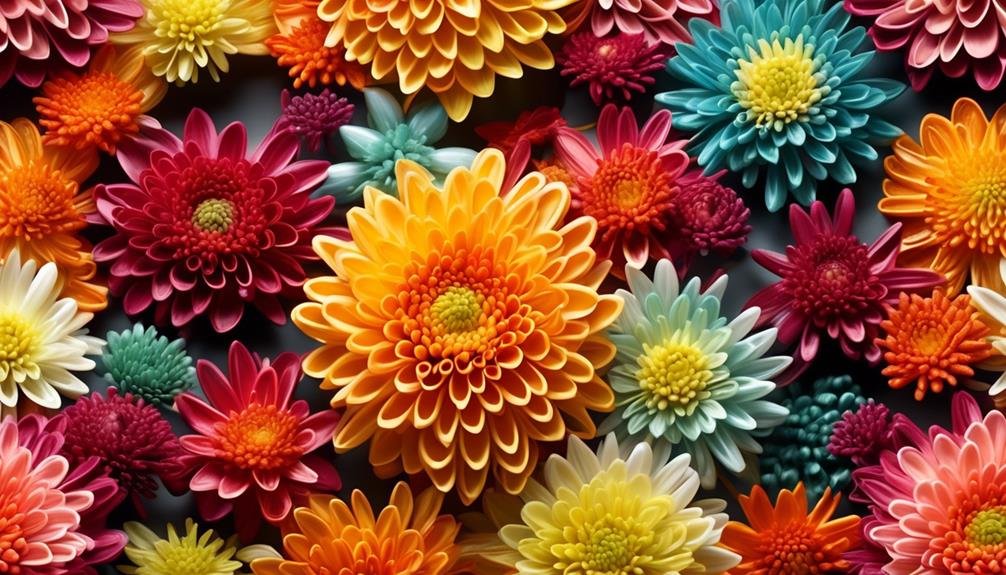
Chrysanthemums come in various varieties, each with its unique characteristics.
Decorative chrysanthemums feature large, fully double blooms with intricate layers of petals, ideal for exhibition and display.
Spider chrysanthemums have long, thin, and curled petals, resembling spider legs, adding a striking touch to floral arrangements.
Daisy chrysanthemums, known for their classic daisy-like appearance, offer a wide range of colours and sizes, with a central disk of florets surrounded by ray florets.
Quill chrysanthemums, with their thin, tubular petals, provide a quill-like appearance, perfect for adding a distinct touch to bouquets.
Additionally, garden or florist chrysanthemums are popular for gardens and floral arrangements, available in various shapes such as anemone, pompom, cushion/button, and single, and semi-double varieties to cater to diverse aesthetic preferences.
Chrysanthemums aren’t only visually appealing but also hold cultural significance in many societies.
They’re used to brew chrysanthemum tea, which is cherished for its health benefits, including relaxation, inflammation reduction, and antioxidant properties.
Across different cultures, chrysanthemums symbolize longevity, fidelity, joy, and optimism.
In some countries, they’re also associated with honouring and commemorating ancestors, making them an integral part of traditional ceremonies and festivals.
Seasonal Availability
Chrysanthemums are most readily available from September to November, making them a popular choice for autumn and early winter events. During this time, they can be found in a variety of colours and sizes at flower shops and local markets, offering versatility for floral arrangements and bouquets.
When chrysanthemums are out of season, flowers such as asters, sunflowers, and dahlias are great alternatives for fall-themed floral designs. Understanding the seasonal availability of chrysanthemums is essential for event planning and floral design, allowing for the creation of stunning and seasonally appropriate displays.
Care Tips
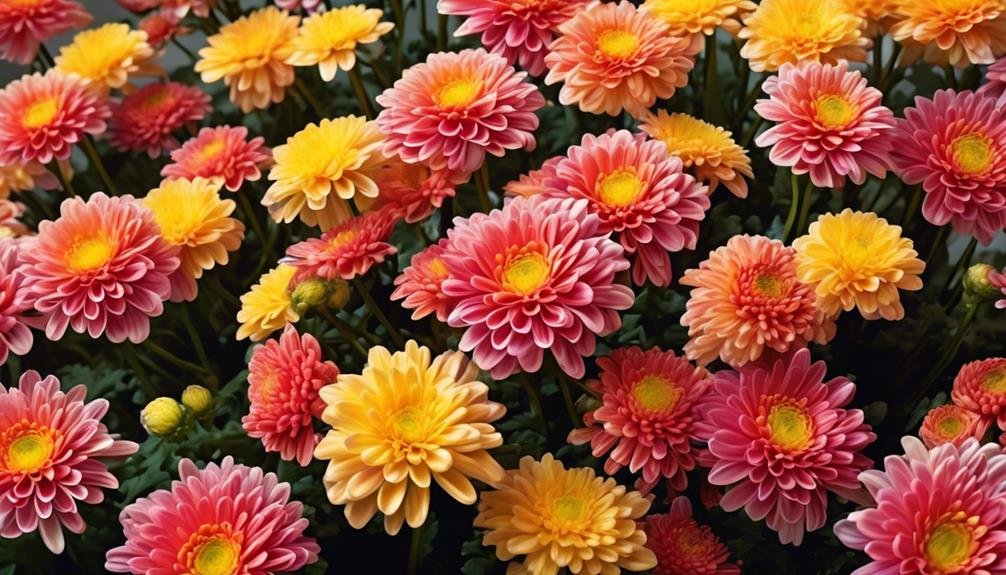
Chrysanthemum Care Tips for Longevity and Vibrancy
When arranging chrysanthemums in a bouquet, start with a clean vase and fresh water. Change the water every 3 to 4 days to prevent bacterial growth and premature wilting. Trim the stems at a 45-degree angle and remove any foliage that may touch the water to maintain the flowers’ health and longevity. Crisscross the stems in the vase to ensure equal access to water and nutrients.
Chrysanthemums can last up to three weeks with proper care. Place the bouquet in deep water, away from direct sunlight and draughts to maintain vibrancy. Handle the blooms with care to prevent damage and prolong their lifespan.
With their wide range of colours and shapes, chrysanthemums add depth and texture to floral arrangements, making them a versatile and popular choice for various occasions.
Are Chrysanthemums and Queen Anne’s Lace Compatible in Floral Arrangements?
When creating floral arrangements, popular florist flowers Queen Anne’s Lace and Chrysanthemums can be compatible due to their delicate and elegant appearance. The white, lacy look of Queen Anne’s Lace complements the fullness of Chrysanthemums, making for a stunning combination of bouquets and centrepieces.
Conclusion
Chrysanthemums are a popular choice for florists due to their versatility and beauty. With various shades, shapes, and sizes, they offer a wide range of options for creating stunning centrepieces, bouquets, and arrangements.
Their single, quilled, and spider blooms provide different textures and visual appeal, making them suitable for a variety of occasions.
With proper care, chrysanthemums can add a touch of elegance and charm to any space.
